Pool Boiling Amelioration by Aqueous Dispersion of Silica Nanoparticles
Abstract
:1. Introduction
- To find the boiling heat transfer characteristics of silica nanofluids.
- To find the effect of silica nanoparticles on PBHTC and CHF in nanofluids.
- To find the effect of wettability, surface roughness, and capillary wicking on pool boiling heat transfer.
- To estimate the bubble frequency and bubble diameter during pool boiling of nanofluids.
- To interpret the pool boiling mechanisms using the experimental outcomes.
2. Materials and Methods
2.1. Starting Material
2.2. Nanopowder Characterization
2.3. Nanofluid Production
2.4. Stability Assessment of Nanofluids
2.5. Boiling Pool Setup and Procedure
2.6. Experimental Conditions
2.7. Surface Roughness and Contact Angle Measurements
2.8. Data Reduction and Uncertainty
3. Result and Discussions
3.1. Feedstock Analysis
3.2. Nanofluids Physical Stability
3.3. Validity of Experiment
3.4. Boiling Characteristics Curves
3.5. PBHTC and Its Enhancement
3.6. CHF and its Enhancement
3.7. Wettability, Surface Contact Angle, and Capillarity
3.8. Surface Roughness
3.9. Bubble Frequency and Bubble Departure Diameter
3.10. Comparison with Published Results
4. Conclusions
- Light absorbance and zeta potential analysis verified the stability of nanofluids. The nanofluids remained stable for more than 20 days.
- The PBHTC and CHF were enhanced with lower concentrations; however, they decreased with higher concentrations. A maximum of 1.33 times enhancements greater than water in PBHTC and CHF was obtained in nanofluids with 0.001 volume fraction. The deposition of nanoparticles over the heater surface is the main reason of heat transfer deterioration at a higher level of nanofluids concentration.
- The wettability and capillarity of nanofluids increased with the decrease in surface contact angle. The increases in wettability and capillarity enhance pool boiling heat transfer and CHF in nanofluids.
- Surface roughness decreased with particle inclusion due to particle deposition on the heating surface. The reduction is more pronounced with higher volume fractions; hence, the pool boiling performance reduced.
- The bubble departure diameter of nanofluids was enlarged with volume fraction as the wettability enhanced and due to the bubble merging on the smooth surface. The bubble departure frequency slightly decreased with rising concentration due to an increase in bubble size. Such occurrences influence the pool boiling performance of nanofluids.
Author Contributions
Funding
Data Availability Statement
Acknowledgments
Conflicts of Interest
References
- Chen, J.; Ahmad, S.; Cai, J.; Liu, H.; Lau, K.T.; Zhao, J. Latest Progress on Nanotechnology Aided Boiling Heat Transfer Enhancement: A Review. Energy 2021, 215, 119114. [Google Scholar] [CrossRef]
- Jamshed, W.; Uma Devi, S.S.; Goodarzi, M.; Prakash, M.; Sooppy Nisar, K.; Zakarya, M.; Abdel-Aty, A.-H. Evaluating the Unsteady Casson Nanofluid over a Stretching Sheet with Solar Thermal Radiation: An Optimal Case Study. Case Stud. Therm. Eng. 2021, 26, 101160. [Google Scholar] [CrossRef]
- Alsayegh, A.; Ali, N. Gas Turbine Intercoolers: Introducing Nanofluids—A Mini-Review. Processes 2020, 8, 1572. [Google Scholar] [CrossRef]
- Choi, S.U.; Eastman, J.A. Enhancing Thermal Conductivity of Fluids with Nanoparticles; Argonne National Lab.: Lemont, IL, USA, 1995. [Google Scholar]
- Kamel, M.S.; Lezsovits, F.; Hussein, A.M.; Mahian, O.; Wongwises, S. Latest Developments in Boiling Critical Heat Flux Using Nanofluids: A Concise Review. Int. Commun. Heat Mass Transf. 2018, 98, 59–66. [Google Scholar] [CrossRef]
- Moghadasi, H.; Malekian, N.; Saffari, H.; Mirza Gheitaghy, A.; Zhang, G.Q. Recent Advances in the Critical Heat Flux Amelioration of Pool Boiling Surfaces Using Metal Oxide Nanoparticle Deposition. Energies 2020, 13, 4026. [Google Scholar] [CrossRef]
- Mehralizadeh, A.; Shabanian, S.R.; Bakeri, G. Experimental and Modeling Study of Heat Transfer Enhancement of TiO2/SiO2 Hybrid Nanofluids on Modified Surfaces in Pool Boiling Process. Eur. Phys. J. Plus 2020, 135, 796. [Google Scholar] [CrossRef]
- Kamel, M.S.; Lezsovits, F. Enhancement of Pool Boiling Heat Transfer Performance Using Dilute Cerium Oxide/Water Nanofluid: An Experimental Investigation. Int. Commun. Heat Mass Transf. 2020, 114, 104587. [Google Scholar] [CrossRef]
- Safaei, M.R.; Tlili, I.; Gholamalizadeh, E.; Abbas, T.; Alkanhal, T.A.; Goodarzi, M.; Dahari, M. Thermal Analysis of a Binary Base Fluid in Pool Boiling System of Glycol–Water Alumina Nano-Suspension. J. Therm. Anal. Calorim. 2021, 143, 2453–2462. [Google Scholar] [CrossRef]
- Li, Z.; Mazinani, A.; Hayat, T.; Al-Rashed, A.A.A.A.; Alsulami, H.; Goodarzi, M.; Sarafraz, M.M. Transient Pool Boiling and Particulate Deposition of Copper Oxide Nano-Suspensions. Int. J. Heat Mass Transf. 2020, 155, 119743. [Google Scholar] [CrossRef]
- Mukherjee, S.; Mishra, P.C.; Chaudhuri, P. Pool Boiling Performance of Aqueous Al2O3 and TiO2 Nanofluids on a Horizontally Placed Flat Polished Surface: An Experimental Investigation. J. Therm. Anal. Calorim. 2020, 1–19. [Google Scholar] [CrossRef]
- Rahimian, A.; Kazeminejad, H.; Khalafi, H.; Mirvakili, S.M.; Akhavan, A. An Experimental Study of the Steel Cylinder Quenching in Water-Based Nanofluids. Int. J. Eng. 2020, 33, 28–33. [Google Scholar] [CrossRef] [Green Version]
- Sezer, N.; Khan, S.A.; Koç, M. Amelioration of the Pool Boiling Heat Transfer Performance by Colloidal Dispersions of Carbon Black. Int. J. Heat Mass Transf. 2019, 137, 599–608. [Google Scholar] [CrossRef]
- Li, Z.; Sarafraz, M.M.; Mazinani, A.; Hayat, T.; Alsulami, H.; Goodarzi, M. Pool Boiling Heat Transfer to CuO-H2O Nanofluid on Finned Surfaces. Int. J. Heat Mass Transf. 2020, 156, 119780. [Google Scholar] [CrossRef]
- Akbari, A.; Alavi Fazel, S.A.; Maghsoodi, S.; Kootenaei, A.S. Pool Boiling Heat Transfer Characteristics of Graphene-Based Aqueous Nanofluids. J. Therm. Anal. Calorim. 2019, 135, 697–711. [Google Scholar] [CrossRef]
- Norouzipour, A.; Abdollahi, A.; Afrand, M. Experimental Study of the Optimum Size of Silica Nanoparticles on the Pool Boiling Heat Transfer Coefficient of Silicon Oxide/Deionized Water Nanofluid. Powder Technol. 2019, 345, 728–738. [Google Scholar] [CrossRef]
- Etedali, S.; Afrand, M.; Abdollahi, A. Effect of Different Surfactants on the Pool Boiling Heat Transfer of SiO2/Deionized Water Nanofluid on a Copper Surface. Int. J. Therm. Sci. 2019, 145, 105977. [Google Scholar] [CrossRef]
- Tian, Z.; Etedali, S.; Afrand, M.; Abdollahi, A.; Goodarzi, M. Experimental Study of the Effect of Various Surfactants on Surface Sediment and Pool Boiling Heat Transfer Coefficient of Silica/DI Water Nano-Fluid. Powder Technol. 2019, 356, 391–402. [Google Scholar] [CrossRef]
- Lobasov, A.S.; Minakov, A.V.; Pryazhnikov, M.I. Experimental Investigation of Surfactants Adding Effect on the Value of the Critical Heat Flux during Pool Boiling of Nanofluids. J. Phys. Conf. Ser. 2018, 1105, 012057. [Google Scholar] [CrossRef]
- Sarafraz, M.M.; Pourmehran, O.; Nikkhah, V.; Arya, A. Pool Boiling Heat Transfer to Zinc Oxide-Ethylene Glycol Nano-Suspension near the Critical Heat Flux. J. Mech. Sci. Technol. 2018, 32, 2309–2315. [Google Scholar] [CrossRef]
- Fan, L.-W.; Li, J.-Q.; Wu, Y.-Z.; Zhang, L.; Yu, Z.-T. Pool Boiling Heat Transfer during Quenching in Carbon Nanotube (CNT)-Based Aqueous Nanofluids: Effects of Length and Diameter of the CNTs. Appl. Therm. Eng. 2017, 122, 555–565. [Google Scholar] [CrossRef]
- Ciloglu, D. An Experimental Investigation of Nucleate Pool Boiling Heat Transfer of Nanofluids from a Hemispherical Surface. Heat Transf. Eng. 2017, 38, 919–930. [Google Scholar] [CrossRef]
- Quan, X.; Wang, D.; Cheng, P. An Experimental Investigation on Wettability Effects of Nanoparticles in Pool Boiling of a Nanofluid. Int. J. Heat Mass Transf. 2017, 108, 32–40. [Google Scholar] [CrossRef]
- Gimeno-Furio, A.; Hernandez, L.; Barison, S.; Agresti, F.; Bottaro, G.; Cabaleiro, D.; Doretti, L.; Mancin, S. Effects of Carbon Nanohorn Based Nanofluids Pool Boiling on Optical Properties and Wettability of Different Metal Surfaces. Heat Transf. Eng. 2020, 1–14. [Google Scholar] [CrossRef]
- Salimpour, M.R.; Karimi, D.M.H.; Abdollahi, A.; Karimipour, A.; Goodarzi, M. Providing a Model for Csf According to Pool Boiling Convection Heat Transfer of Water/Ferrous Oxide Nanofluid Using Sensitivity Analysis. Int. J. Numer. Methods Heat Fluid Flow 2019, 30, 2867–2881. [Google Scholar] [CrossRef]
- Goodarzi, M.; Tlili, I.; Moria, H.; Cardoso, E.M.; Alkanhal, T.A.; Anqi, A.E.; Safaei, M.R. Boiling Flow of Graphene Nanoplatelets Nano-Suspension on a Small Copper Disk. Powder Technol. 2021, 377, 10–19. [Google Scholar] [CrossRef]
- Goodarzi, M.; Tlili, I.; Moria, H.; Abdullah Alkanhal, T.; Ellahi, R.; Anqi, A.E.; Reza Safaei, M. Boiling Heat Transfer Characteristics of Graphene Oxide Nanoplatelets Nano-Suspensions of Water-Perfluorohexane (C6F14) and Water-n-Pentane. Alex. Eng. J. 2020, 59, 4511–4521. [Google Scholar] [CrossRef]
- Arora, N.; Mukherjee, S.; Mishra, P.C.; Chakrabarty, S.; Chaudhuri, P. Thermal Conductivity Enhancement of Silica Nanofluids for Ultrafast Cooling Applications: Statistical Modeling and Economic Analysis. Int. J. Thermophys. 2021, 42, 62. [Google Scholar] [CrossRef]
- Mukherjee, S.; Halder, T.; Ranjan, S.; Bose, K.; Mishra, P.C.; Chakrabarty, S. Effects of SiO2 Nanoparticles Addition on Performance of Commercial Engine Coolant: Experimental Investigation and Empirical Correlation. Energy 2021, 231, 120913. [Google Scholar] [CrossRef]
- Ali, N.; Bahman, A.M.; Aljuwayhel, N.F.; Ebrahim, S.A.; Mukherjee, S.; Alsayegh, A. Carbon-Based Nanofluids and Their Advances towards Heat Transfer Applications—A Review. Nanomaterials 2021, 11, 1628. [Google Scholar] [CrossRef] [PubMed]
- Mukherjee, S.; Mishra, P.C.; Chaudhuri, P. Stability of Heat Transfer Nanofluids—A Review. ChemBioEng Rev. 2018, 5, 312–333. [Google Scholar] [CrossRef]
- Chen, M.; He, Y.; Huang, J.; Zhu, J. Investigation into Au Nanofluids for Solar Photothermal Conversion. Int. J. Heat Mass Transf. 2017, 108, 1894–1900. [Google Scholar] [CrossRef]
- Mashali, F.; Languri, E.; Mirshekari, G.; Davidson, J.; Kerns, D. Nanodiamond Nanofluid Microstructural and Thermo-Electrical Characterization. Int. Commun. Heat Mass Transf. 2019, 101, 82–88. [Google Scholar] [CrossRef]
- ImageJ. Available online: https://imagej.nih.gov/ij/ (accessed on 23 June 2021).
- Kline, S.J. Describing Uncertainty in Single Sample Experiments. Mech. Eng. 1953, 75, 3–8. [Google Scholar]
- Schneider, C.A.; Rasband, W.S.; Eliceiri, K.W. NIH Image to ImageJ: 25 Years of Image Analysis. Nat. Methods 2012, 9, 671–675. [Google Scholar] [CrossRef]
- Ali, N.; Teixeira, J.A.; Addali, A. A Review on Nanofluids: Fabrication, Stability, and Thermophysical Properties. J. Nanomater. 2018, 2018, e6978130. [Google Scholar] [CrossRef]
- Ghadimi, A.; Saidur, R.; Metselaar, H.S.C. A Review of Nanofluid Stability Properties and Characterization in Stationary Conditions. Int. J. Heat Mass Transf. 2011, 54, 4051–4068. [Google Scholar] [CrossRef]
- Shah, J.; Ranjan, M.; Davariya, V.; Gupta, S.K.; Sonvane, Y. Temperature-Dependent Thermal Conductivity and Viscosity of Synthesized α-Alumina Nanofluids. Appl. Nanosci. 2017, 7, 803–813. [Google Scholar] [CrossRef] [Green Version]
- Rohsenow, W.M. A Method of Correlating Heat Transfer Data for Surface Boiling of Liquids; M.I.T. Division of Industrial Cooporation: Cambridge, MA, USA, 1951. [Google Scholar]
- Sheikhbahai, M.; Nasr Esfahany, M.; Etesami, N. Experimental Investigation of Pool Boiling of Fe3O4/Ethylene Glycol–Water Nanofluid in Electric Field. Int. J. Therm. Sci. 2012, 62, 149–153. [Google Scholar] [CrossRef]
- Hu, Y.; Liu, Z.; He, Y. Effects of SiO2 Nanoparticles on Pool Boiling Heat Transfer Characteristics of Water Based Nanofluids in a Cylindrical Vessel. Powder Technol. 2018, 327, 79–88. [Google Scholar] [CrossRef]
- Kamel, M.S.; Lezsovits, F. Experimental Investigation on Pool Boiling Heat Transfer Performance Using Tungsten Oxide WO3 Nanomaterial-Based Water Nanofluids. Materials 2020, 13, 1922. [Google Scholar] [CrossRef] [PubMed]
- Cieśliński, J.T.; Ronewicz, K. Burnout Investigation of Small Diameter Tubes Immersed in Nanofluids. Energies 2021, 14, 3888. [Google Scholar] [CrossRef]
- Golkar, S.H.; Khayat, M.; Zareh, M. Experimental Study of Heat Transfer Characteristics of Nanofluids Nucleate and Film Boiling on Horizontal Flat Plate. Sci. Iran. 2021. [Google Scholar] [CrossRef]
- Zafar, S.; Adil, M.; Azhar, M.; Siddiqui, M.A. Experimental and Numerical Study of Pool Boiling and Critical Heat Flux Enhancement Using Water Based Silica Nanofluids. Heat Mass Transf. 2021, 1–15. [Google Scholar] [CrossRef]
- Alam, M. Experimental Studies on Pool Boiling of Nanofluids over a Heated Nichrome Wire. Master’s Thesis, Aligarh Muslim University, Aligarh, India, 2016. [Google Scholar]
- Kujawska, A.; Mulka, R.; Hamze, S.; Żyła, G.; Zajaczkowski, B.; Buschmann, M.H.; Estellé, P. The Effect of Boiling in a Thermosyphon on Surface Tension and Contact Angle of Silica and Graphene Oxide Nanofluids. Colloids Surf. A Physicochem. Eng. Asp. 2021, 627, 127082. [Google Scholar] [CrossRef]
- Chinnam, J.; Das, D.K.; Vajjha, R.S.; Satti, J.R. Measurements of the Surface Tension of Nanofluids and Development of a New Correlation. Int. J. Therm. Sci. 2015, 98, 68–80. [Google Scholar] [CrossRef]
- Majumder, B.; Katarkar, A.; Bhaumik, S. Effect of Structured Surface on Contact Angle Using Sessile Droplet Method. IOP Conf. Ser. Mater. Sci. Eng. 2020, 814, 012034. [Google Scholar] [CrossRef]
- Shi, J.; Jia, X.; Feng, D.; Chen, Z.; Dang, C. Wettability Effect on Pool Boiling Heat Transfer Using a Multiscale Copper Foam Surface. Int. J. Heat Mass Transf. 2020, 146, 118726. [Google Scholar] [CrossRef]
- Estellé, P.; Cabaleiro, D.; Żyła, G.; Lugo, L.; Murshed, S.M.S. Current Trends in Surface Tension and Wetting Behavior of Nanofluids. Renew. Sustain. Energy Rev. 2018, 94, 931–944. [Google Scholar] [CrossRef]
- Hernaiz, M.; Alonso, V.; Estellé, P.; Wu, Z.; Sundén, B.; Doretti, L.; Mancin, S.; Çobanoğlu, N.; Karadeniz, Z.H.; Garmendia, N.; et al. The Contact Angle of Nanofluids as Thermophysical Property. J. Colloid Interface Sci. 2019, 547, 393–406. [Google Scholar] [CrossRef]
- Sarafraz, M.M.; Kiani, T.; Hormozi, F. Critical Heat Flux and Pool Boiling Heat Transfer Analysis of Synthesized Zirconia Aqueous Nano-Fluids. Int. Commun. Heat Mass Transf. 2016, 70, 75–83. [Google Scholar] [CrossRef]
- Bang, I.C.; Heung Chang, S. Boiling Heat Transfer Performance and Phenomena of Al2O3–Water Nano-Fluids from a Plain Surface in a Pool. Int. J. Heat Mass Transf. 2005, 48, 2407–2419. [Google Scholar] [CrossRef]
- Kim, H.; Kim, J.; Kim, M.H. Effect of Nanoparticles on CHF Enhancement in Pool Boiling of Nano-Fluids. Int. J. Heat Mass Transf. 2006, 49, 5070–5074. [Google Scholar] [CrossRef]
- Huitink, D.; Ontiveros, E.E.D.; Hassan, Y. The Bubble Fossil Record: Insight into Boiling Nucleation Using Nanofluid Pool-Boiling. Heat Mass Transf. 2012, 48, 267–274. [Google Scholar] [CrossRef]
- Phan, H.T.; Caney, N.; Marty, P.; Colasson, S.; Gavillet, J. Surface Wettability Control by Nanocoating: The Effects on Pool Boiling Heat Transfer and Nucleation Mechanism. Int. J. Heat Mass Transf. 2009, 52, 5459–5471. [Google Scholar] [CrossRef]
- McFadden, P.W.; Grassmann, P. The Relation between Bubble Frequency and Diameter during Nucleate Pool Boiling. Int. J. Heat Mass Transf. 1962, 5, 169–173. [Google Scholar] [CrossRef]
- Ivey, H.J. Relationships between Bubble Frequency, Departure Diameter and Rise Velocity in Nucleate Boiling. Int. J. Heat Mass Transf. 1967, 10, 1023–1040. [Google Scholar] [CrossRef]
- Dong, L.; Quan, X.; Cheng, P. An Experimental Investigation of Enhanced Pool Boiling Heat Transfer from Surfaces with Micro/Nano-Structures. Int. J. Heat Mass Transf. 2014, 71, 189–196. [Google Scholar] [CrossRef]
- Kamel, M.S.; Lezsovits, F. Experimental Study on Pool Boiling Heat Transfer Performance of Magnesium Oxide Nanoparticles Based Water Nanofluid. Pollack Period. 2020, 15, 101–112. [Google Scholar] [CrossRef]
- Kamel, M.S.; Lezsovits, F.; Abdollahi, A.; Izadi, M. Amelioration of Pool Boiling Thermal Performance in Case of Using a New Hybrid Nanofluid. Case Stud. Therm. Eng. 2021, 24, 100872. [Google Scholar] [CrossRef]
- Abdollahi, A.; Salimpour, M.R.; Etesami, N. Experimental Analysis of Magnetic Field Effect on the Pool Boiling Heat Transfer of a Ferrofluid. Appl. Therm. Eng. 2017, 111, 1101–1110. [Google Scholar] [CrossRef]
- Kandlikar, S.G. A Theoretical Model to Predict Pool Boiling CHF Incorporating Effects of Contact Angle and Orientation. J. Heat Transf. 2001, 123, 1071–1079. [Google Scholar] [CrossRef]
- Zuber, N. Hydrodynamic Aspects of Boiling Heat Transfer. Ph.D. Thesis, United States Atomic Energy Commission, Washington, DC, USA, 1959. [Google Scholar]

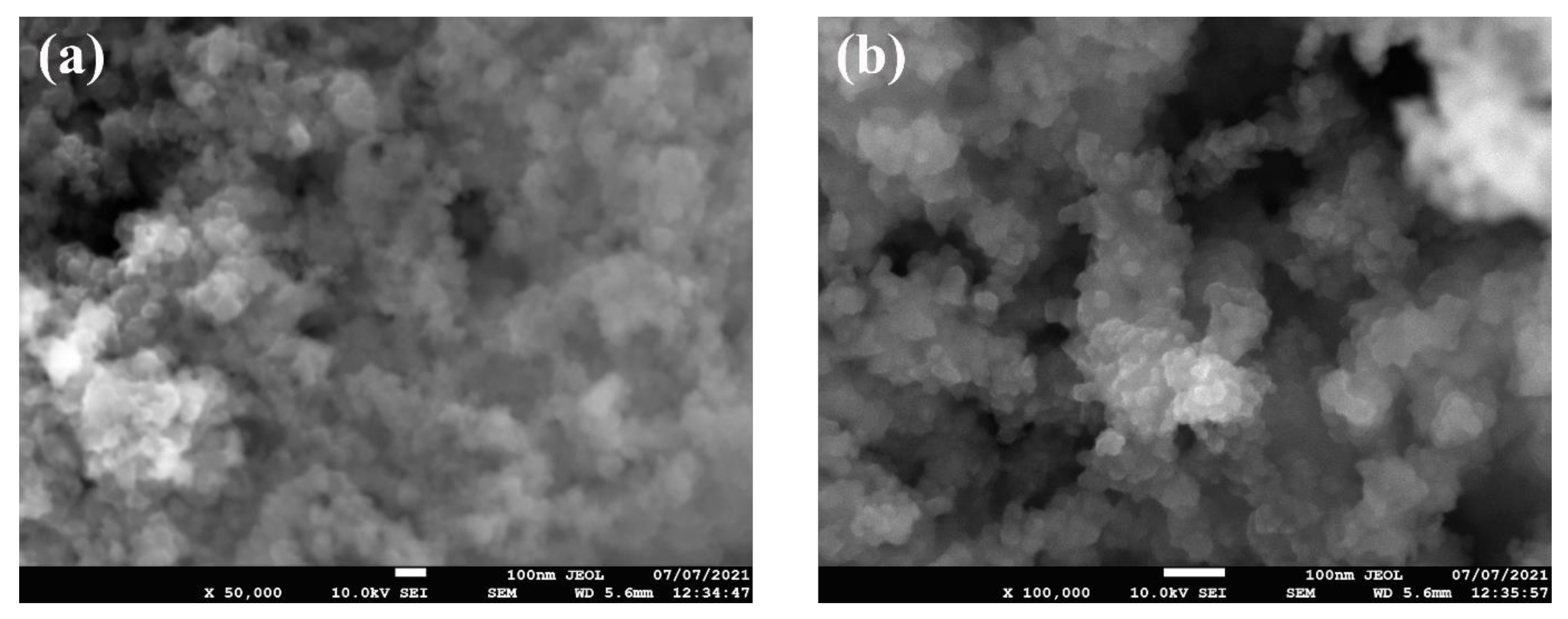

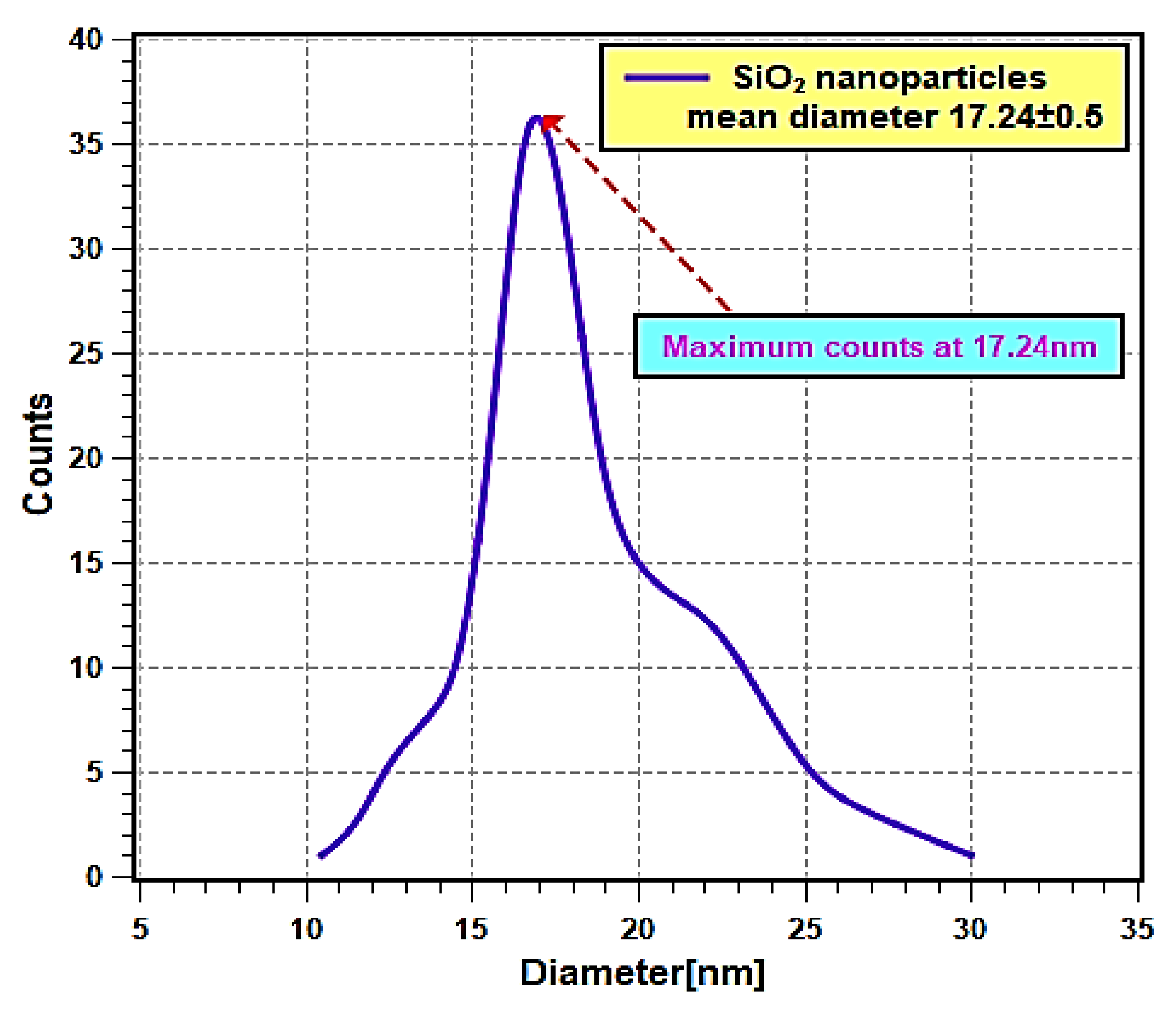
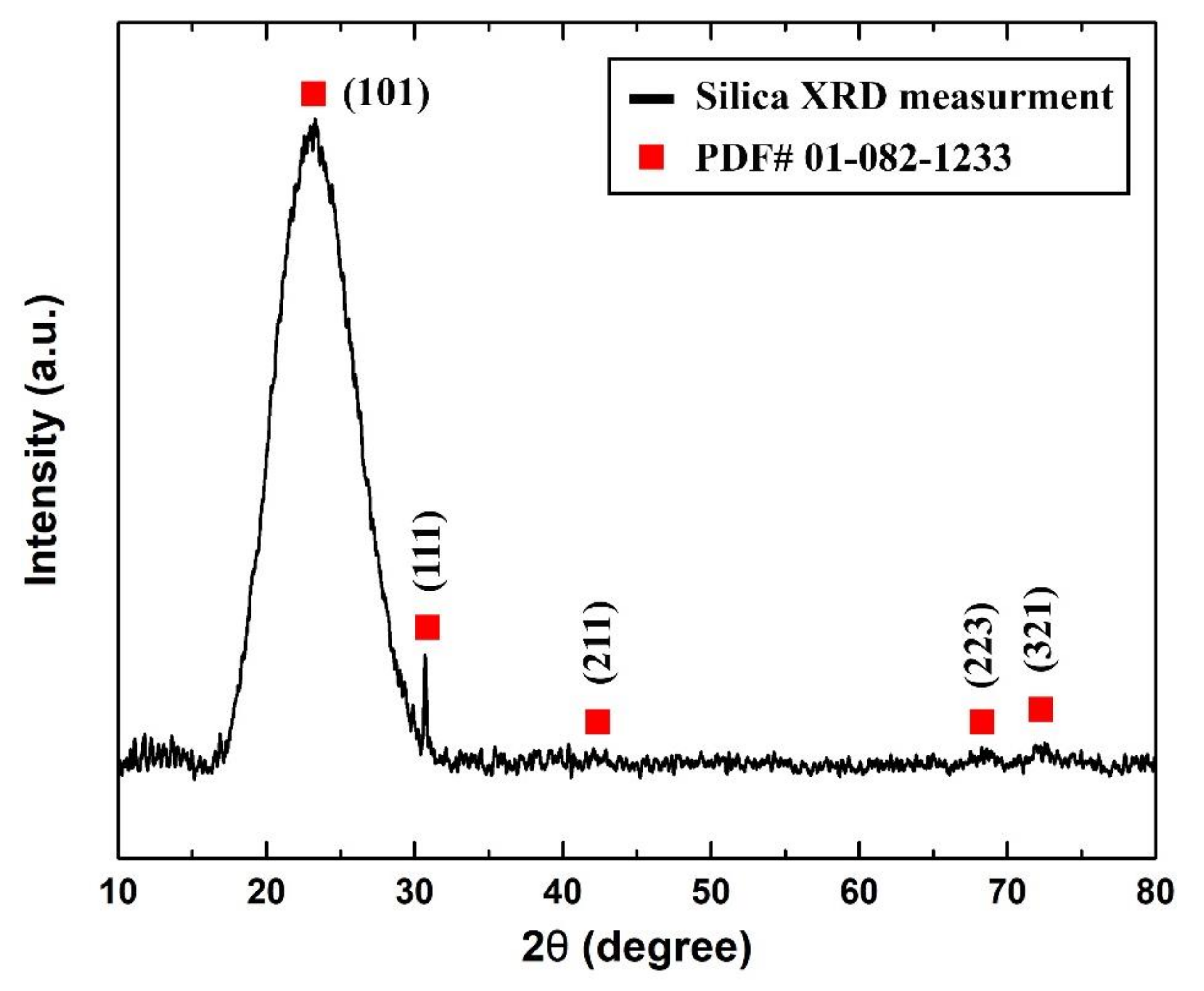
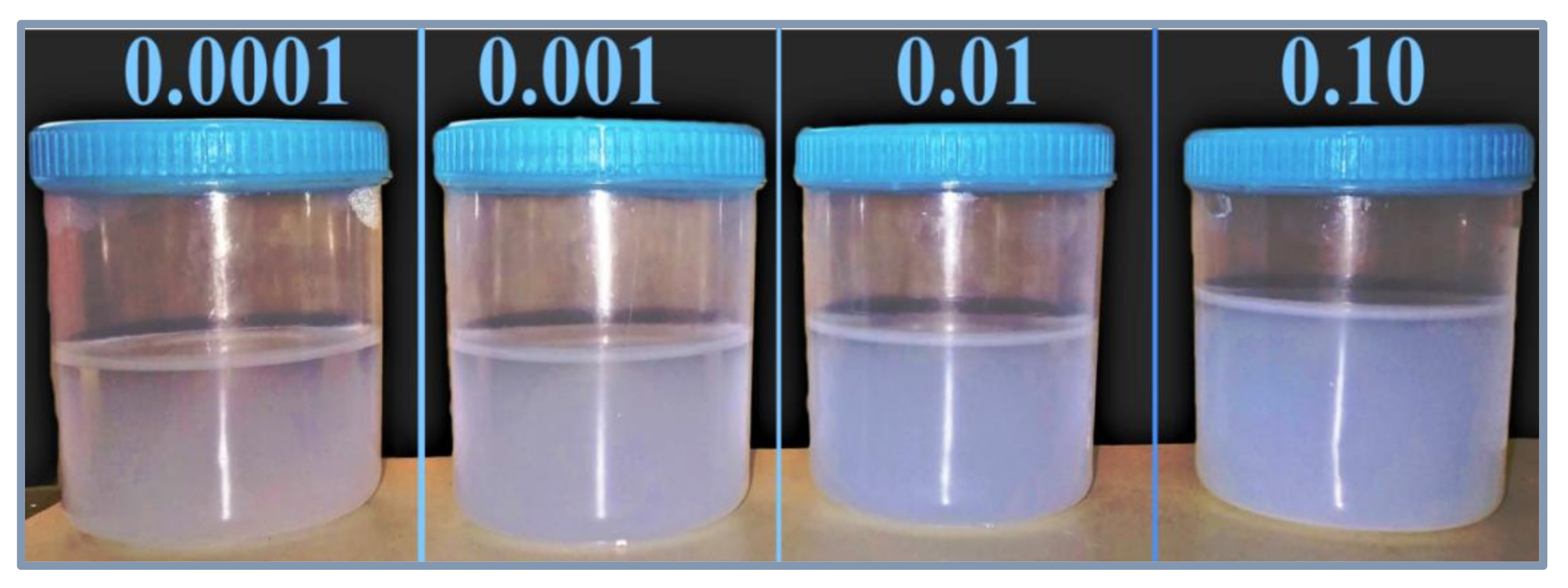
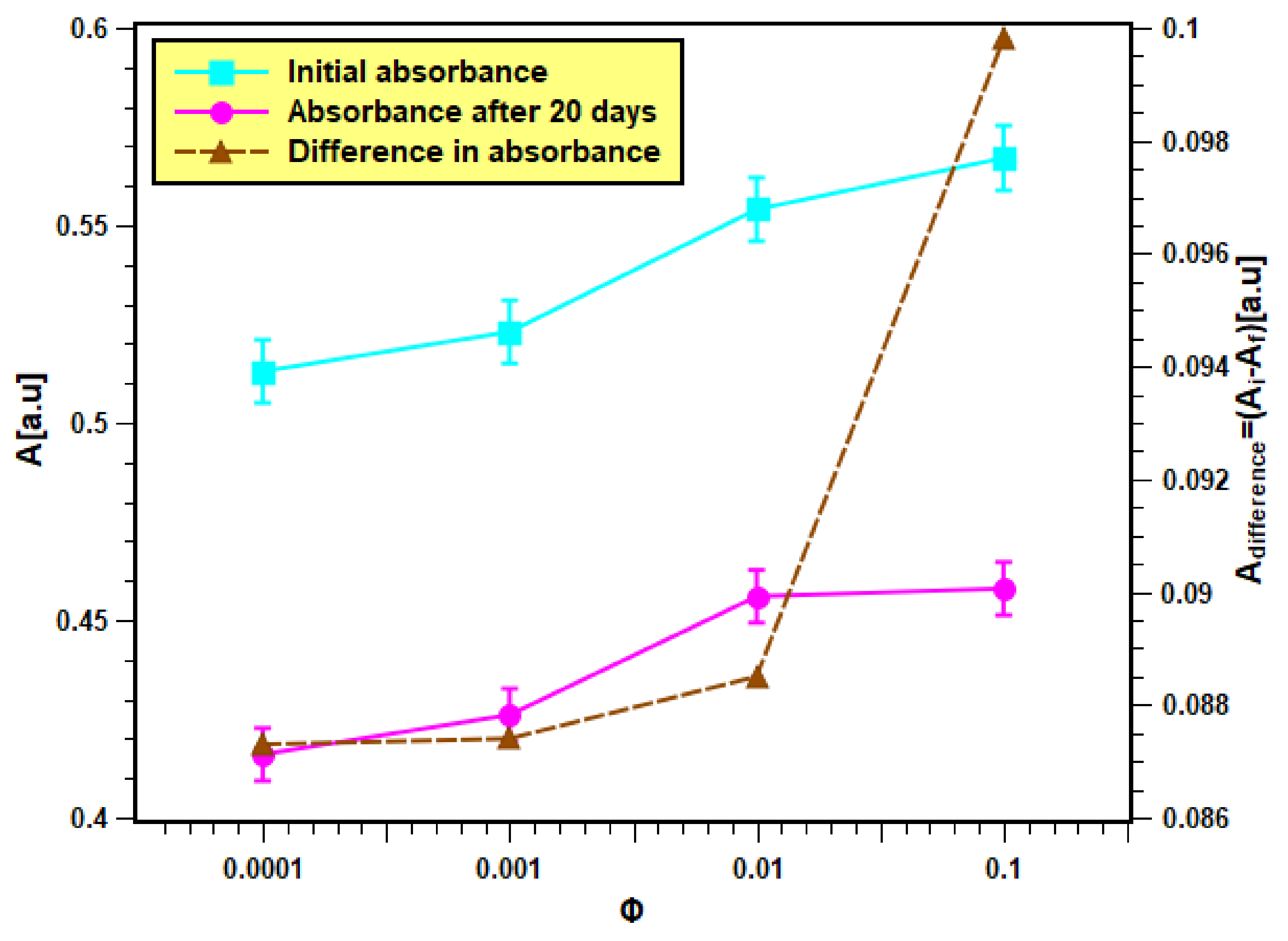
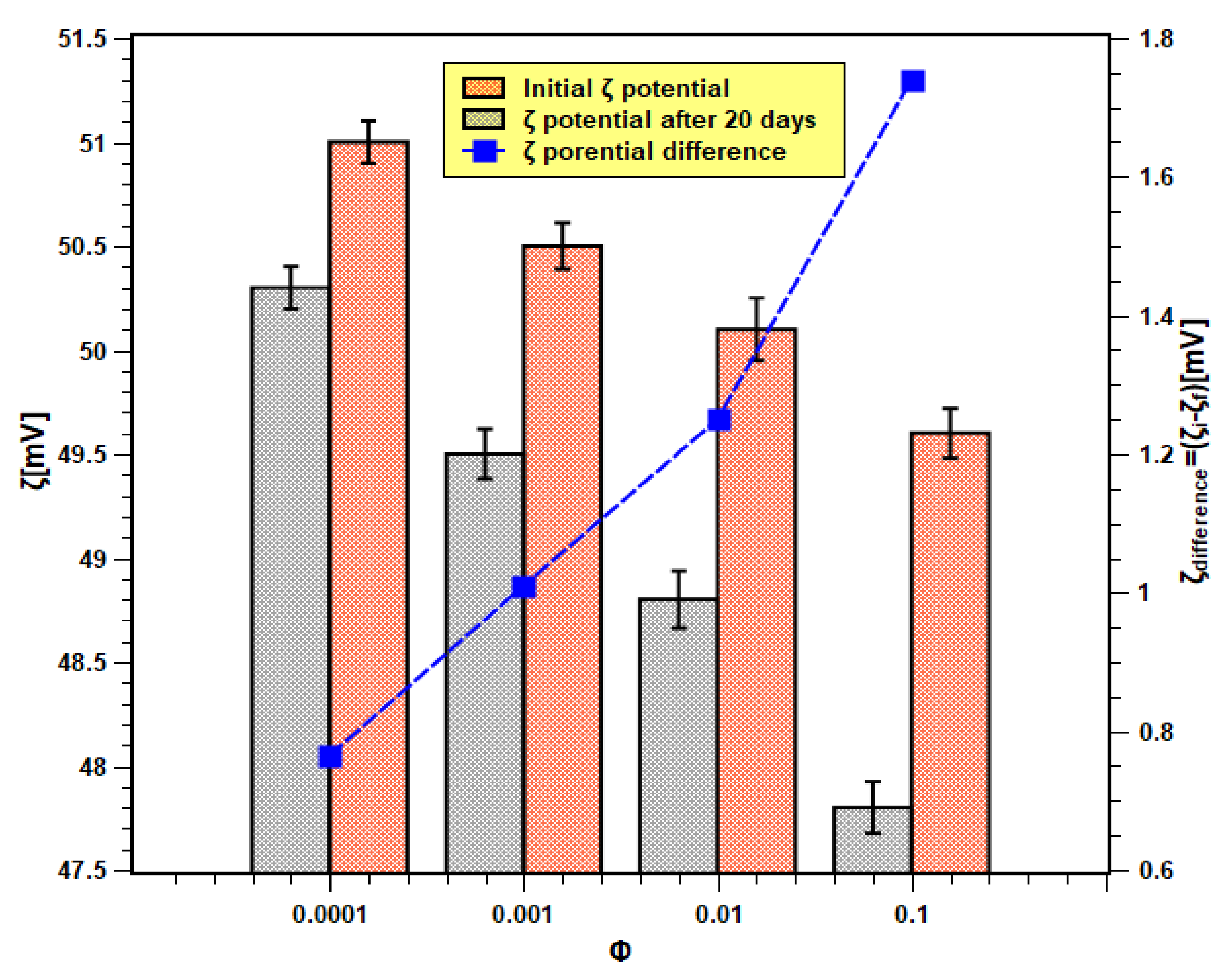
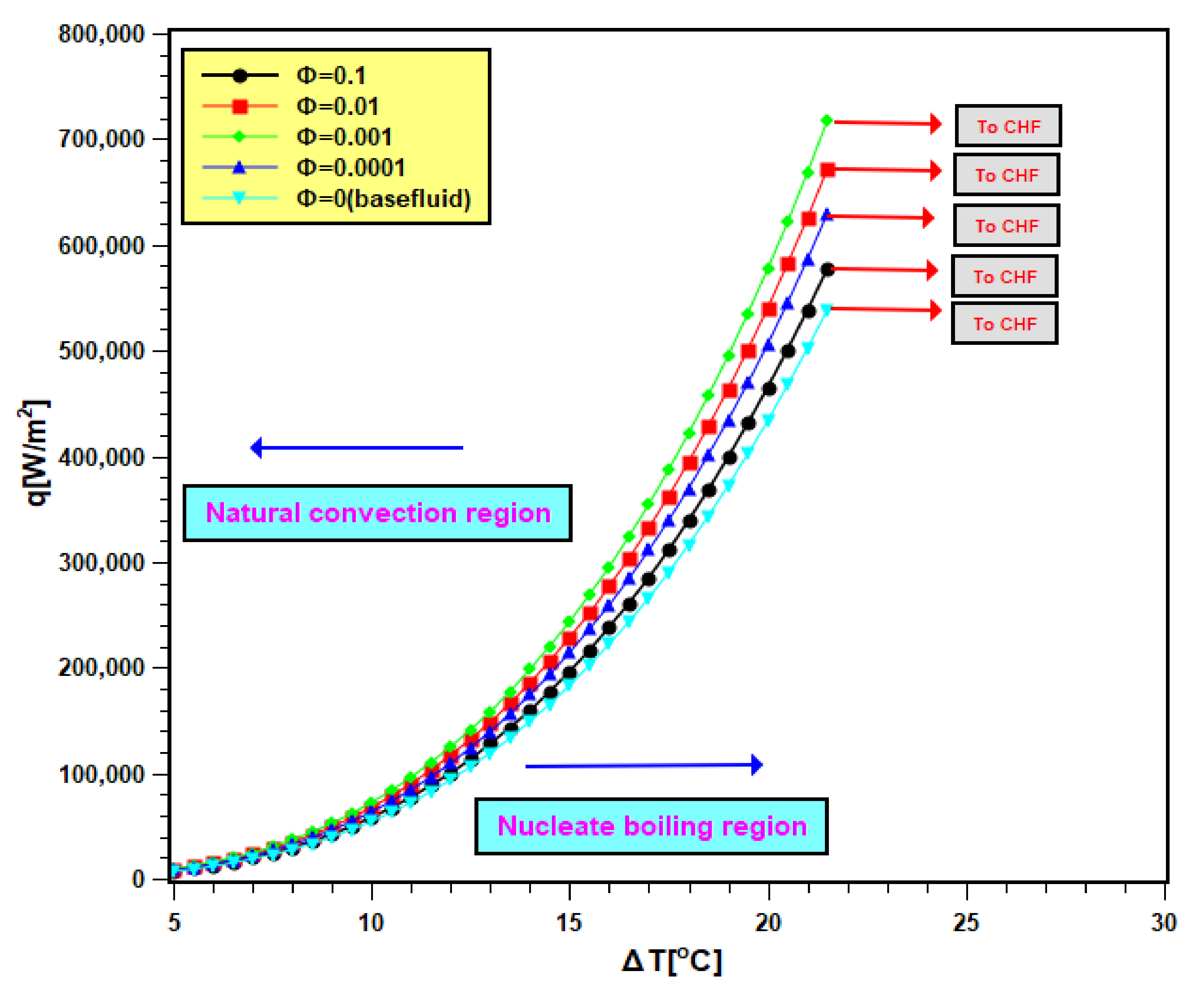
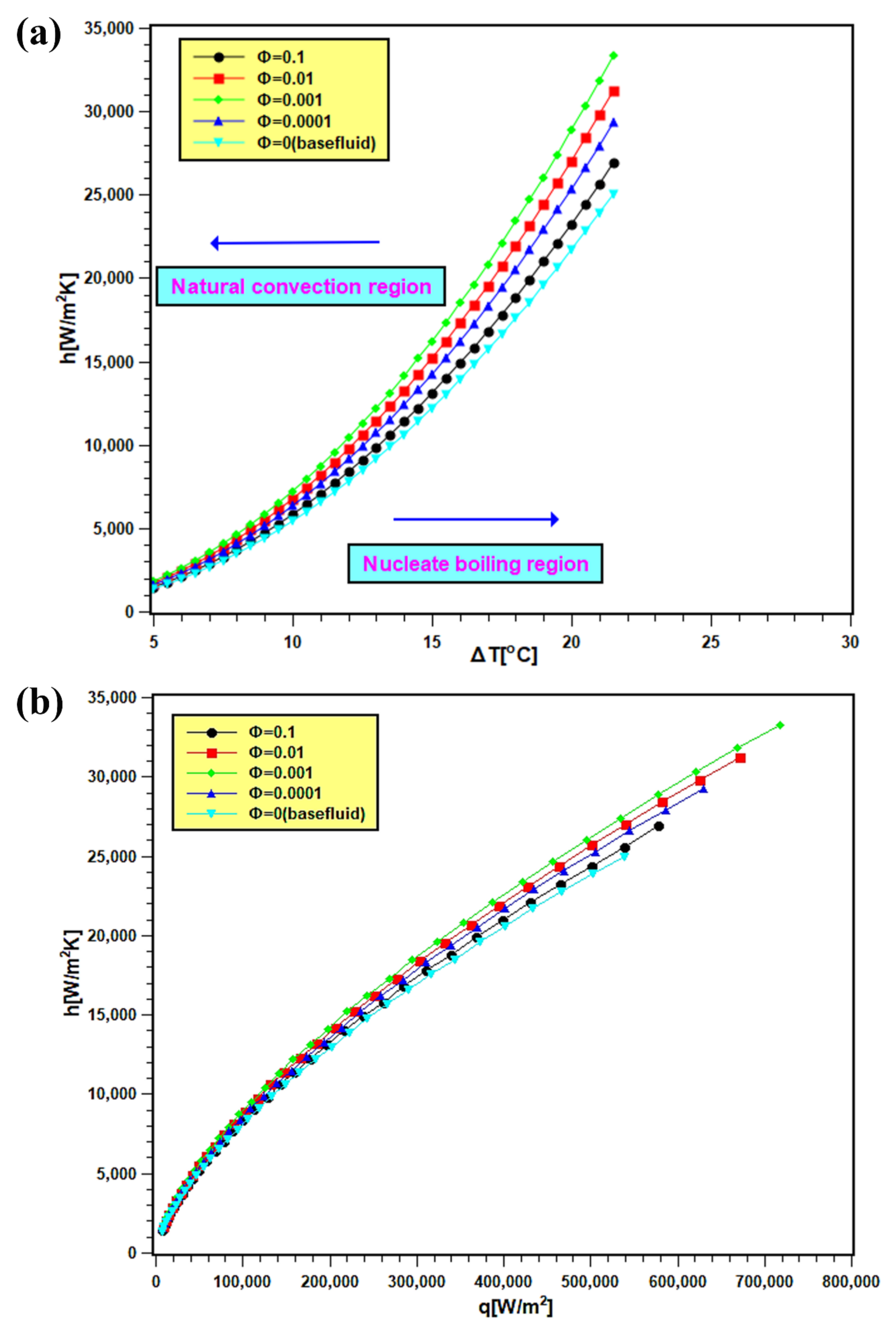

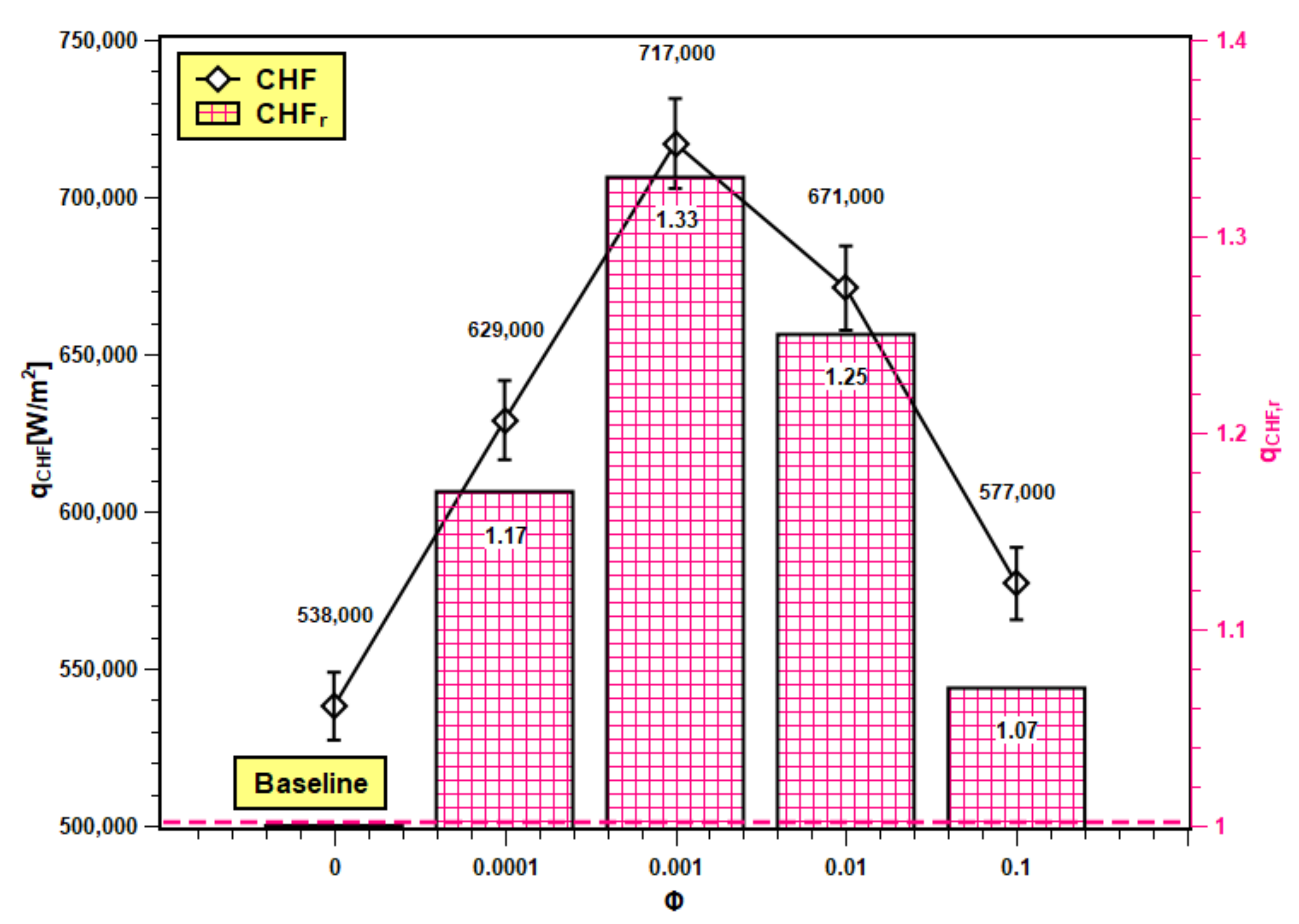
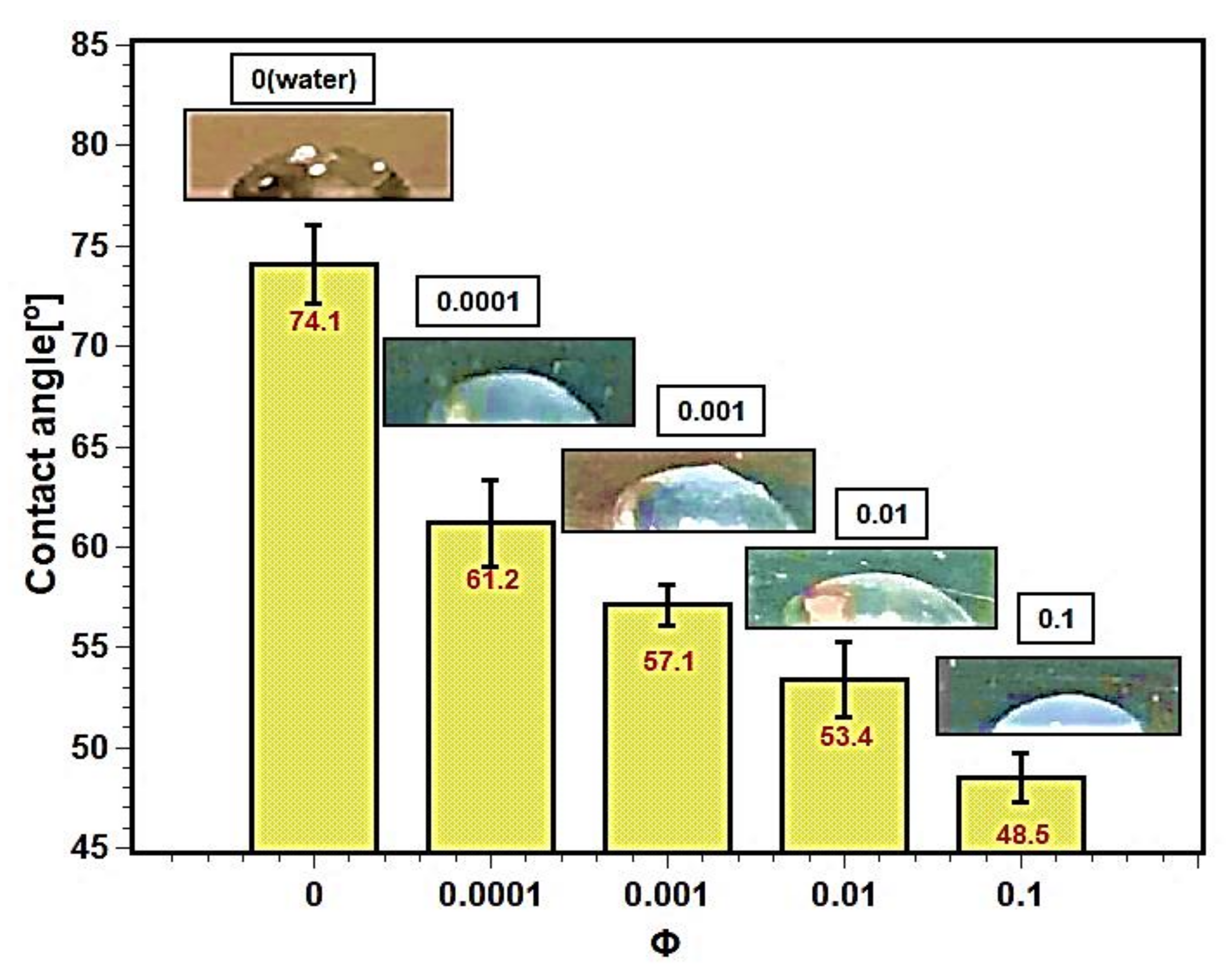
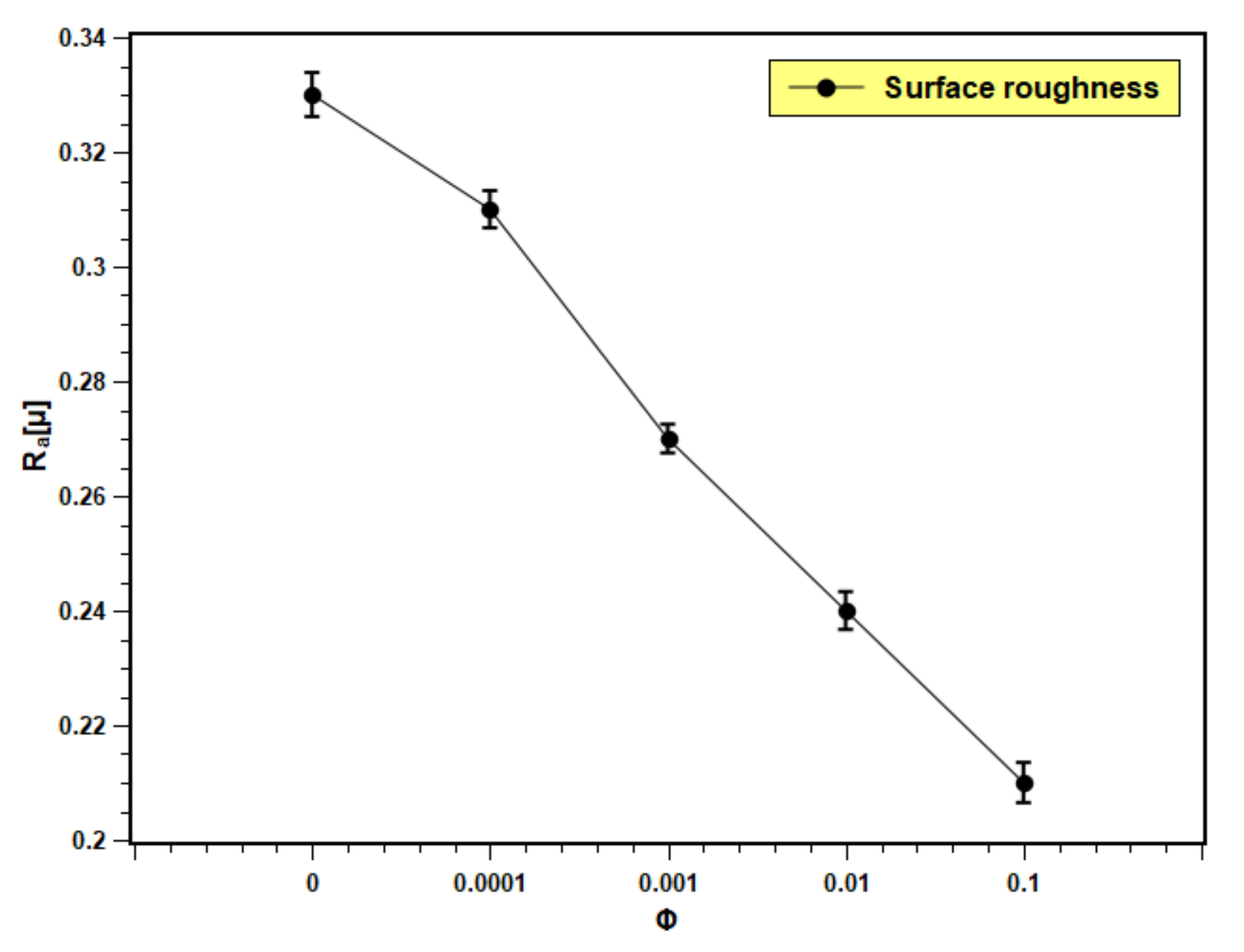

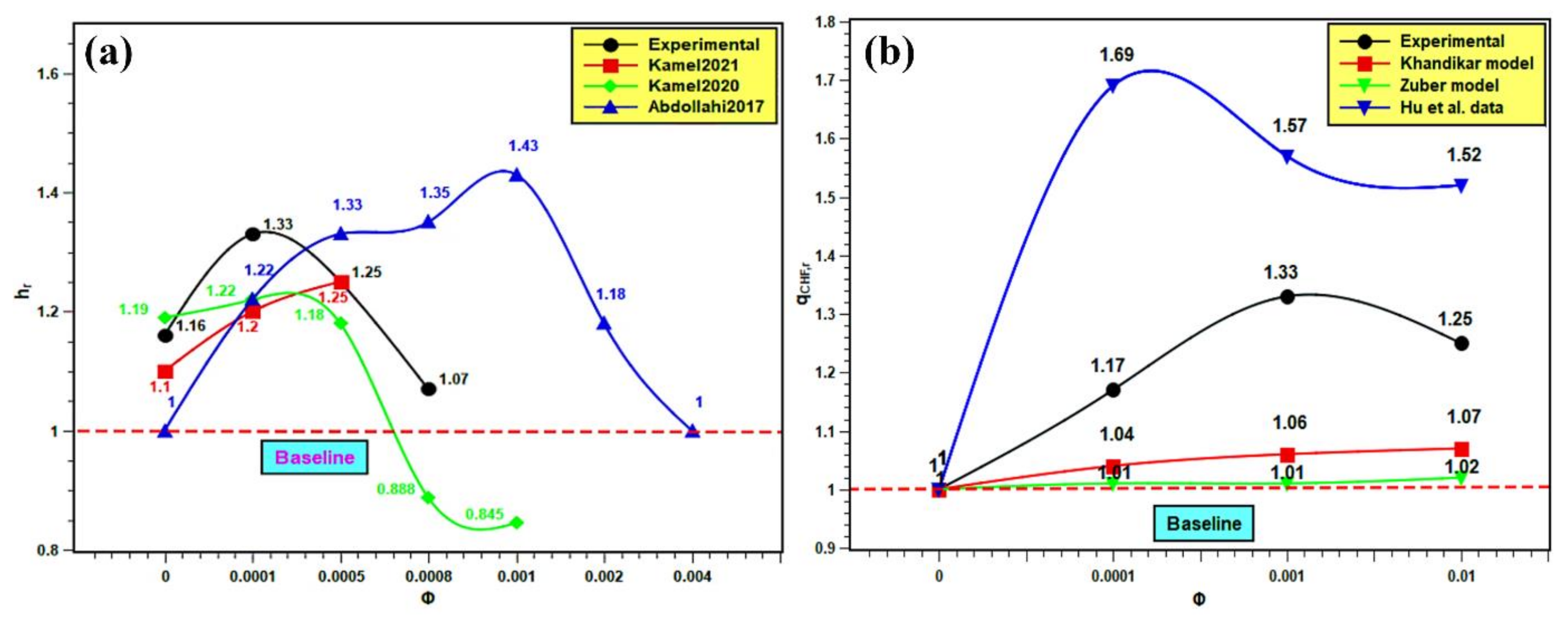
| Parameter | Range |
|---|---|
| Particle size range | 10.55–25.25 nm |
| Volume fraction | 0.0001–0.1 |
| Heat flux input | 6.7–577.483 kW/m2 |
| Boiling temperature | 97.5–101.12 °C |
| Boiling region | Nucleate boiling region |
| Instruments | Parameters | Uncertainty |
|---|---|---|
| Thermocouple | Temperature | ±0.1 °C |
| Voltmeter | Voltage | ±0.3 V |
| Ammeter | Current | ±0.01 A |
| Pressure gauge | Pressure | ±0.05 |
| Chino KR2000 data logger | Temperature | ±0.1% |
| Taylor Hobson Surtronic-25 | Surface roughness | ±0.015 |
Publisher’s Note: MDPI stays neutral with regard to jurisdictional claims in published maps and institutional affiliations. |
© 2021 by the authors. Licensee MDPI, Basel, Switzerland. This article is an open access article distributed under the terms and conditions of the Creative Commons Attribution (CC BY) license (https://creativecommons.org/licenses/by/4.0/).
Share and Cite
Mukherjee, S.; Ali, N.; Aljuwayhel, N.F.; Mishra, P.C.; Sen, S.; Chaudhuri, P. Pool Boiling Amelioration by Aqueous Dispersion of Silica Nanoparticles. Nanomaterials 2021, 11, 2138. https://doi.org/10.3390/nano11082138
Mukherjee S, Ali N, Aljuwayhel NF, Mishra PC, Sen S, Chaudhuri P. Pool Boiling Amelioration by Aqueous Dispersion of Silica Nanoparticles. Nanomaterials. 2021; 11(8):2138. https://doi.org/10.3390/nano11082138
Chicago/Turabian StyleMukherjee, Sayantan, Naser Ali, Nawaf F. Aljuwayhel, Purna C. Mishra, Swarnendu Sen, and Paritosh Chaudhuri. 2021. "Pool Boiling Amelioration by Aqueous Dispersion of Silica Nanoparticles" Nanomaterials 11, no. 8: 2138. https://doi.org/10.3390/nano11082138
APA StyleMukherjee, S., Ali, N., Aljuwayhel, N. F., Mishra, P. C., Sen, S., & Chaudhuri, P. (2021). Pool Boiling Amelioration by Aqueous Dispersion of Silica Nanoparticles. Nanomaterials, 11(8), 2138. https://doi.org/10.3390/nano11082138









